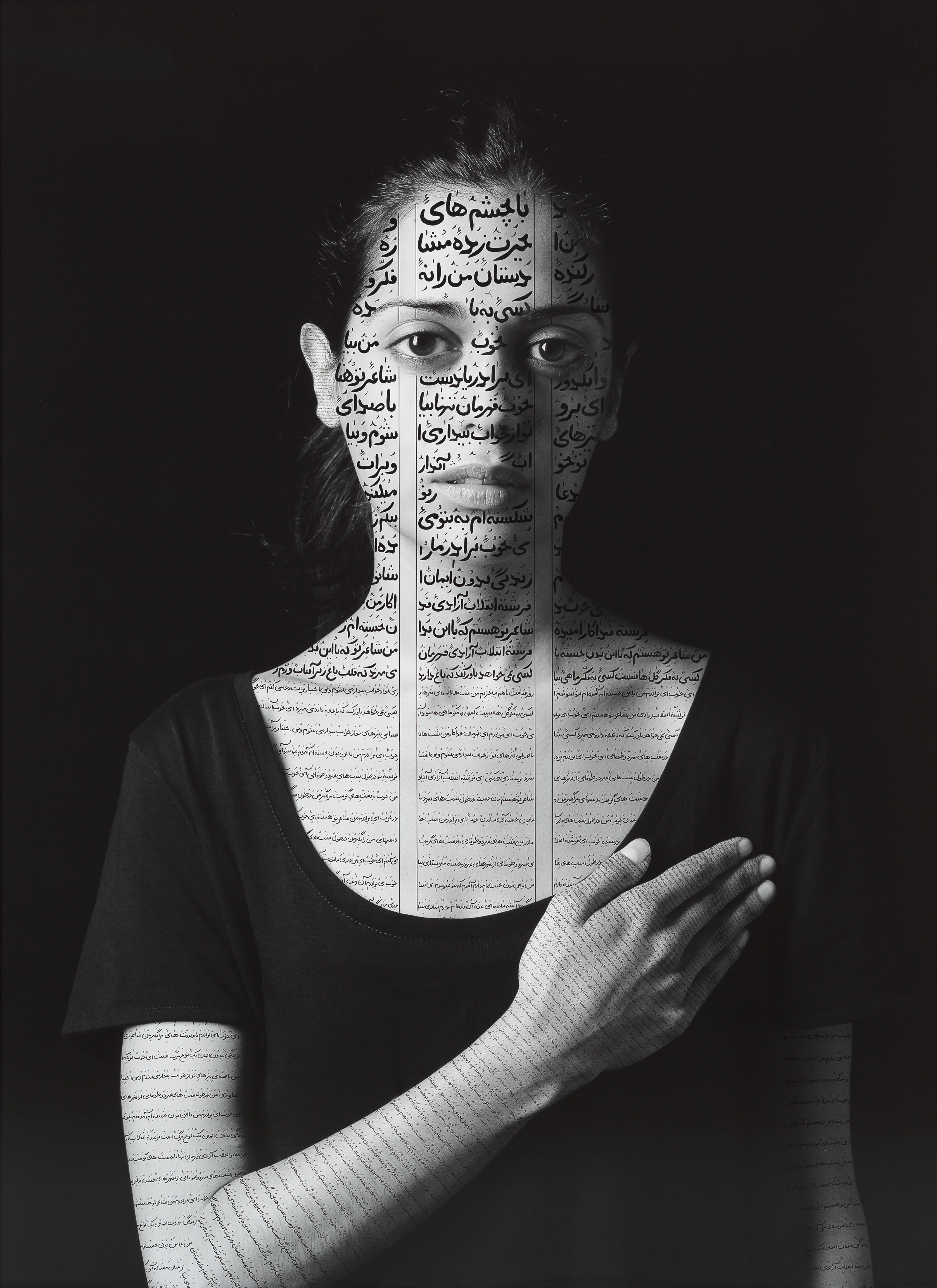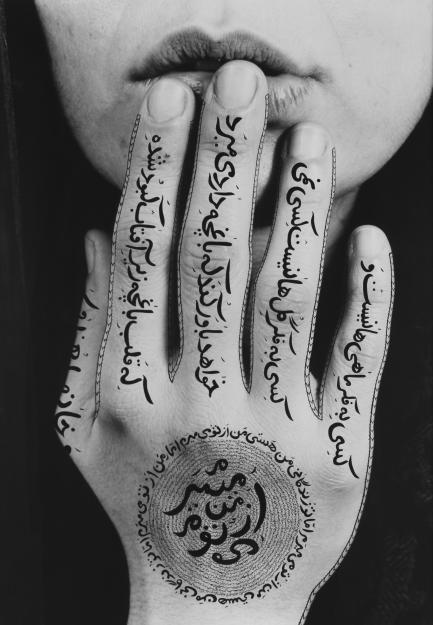Shirin Neshat
Untitled (Women of Allah), 1996
Ink on RC print
47 7/8 x 33 1/4 in. (121.6 x 84.5 cm)
Photograph taken by Larry Barns
© Shirin Neshat. Courtesy Gladstone Gallery, New York and Brussels
Hirshhorn Presents “Shirin Neshat: Facing History”
“Shirin Neshat: Facing History,” a major exhibition of the work of the Iranian-born, New York-based video artist, photographer and filmmaker, runs May 18–Sept. 20 at the Smithsonian’s Hirshhorn Museum and Sculpture Garden. It is the first exhibition to place Neshat’s work in the context of the history of modern Iran, a significant influence in her work.
“This exhibition breaks new ground in illuminating the cultural and political influences that have informed her creative life,” said Melissa Chiu, the Hirshhorn’s director, who organized the exhibition with Melissa Ho, an associate curator at the museum. “Neshat imaginatively engages with contemporary realities, conveying deep conviction with a powerful and authentic voice.”
For the past two decades, Neshat has explored complex issues that exist at the intersection of gender and politics, particularly as reflected in the changing status of women in Iran. Although her work is informed by the social tensions of the late 20th and early 21st centuries, Neshat avoids polemical messages, instead framing political struggles as poetic allegories and personal narratives.
Her works are presented in an order that allows viewers to experience an unfolding of history through the artist’s eyes. The film “Munis” (2008) presents a magical realist vision of a young woman energized by the popular resistance against the 1953 coup that reinstalled the Shah. The fraught gender politics of the Islamic Republic is given allegorical form in an astonishing trio of video installations that launched her international reputation: “Turbulent” (1998), “Rapture” (1999) and “Fervor” (2000). The photo series “The Book of Kings” (2012) casts models as symbolic participants in the recent Green Revolution and Arab Spring.
Smaller galleries will provide background for the artworks with illuminated Safavid-period manuscript pages, wire-service photographs and newsreels, as well as production photos, never-before-exhibited studies and items from Neshat’s personal library that reveal her literary sources.
The exhibition will be accompanied by a full-color catalog that includes Chiu’s interview with the artist and essays by Ho, Iranian scholar Mahnaz Afkhami and poet and art critic Steven Henry Madoff.
Monday, May 18, at 6:30 p.m., Neshat speaks about her work in the latest installment of the ongoing Meet the Artist series. The artist’s first feature film, “Women without Men” (2009) screens Thursday, June 11, at 7 p.m. Other programs will be announced.
Biography: Shirin Neshat
Born in Qazvin, Iran, in 1957, Shirin Neshat lives and works in New York City. For more than two decades she has made photographs, films and video installations that poetically address issues of gender and politics, creating a body of work that speaks to her status as an artist in exile.
Having immigrated to the United States to attend school, she was unable to return because of the Iranian Revolution of 1979. She studied painting and printmaking at the University of California, Berkeley, receiving a Bachelor of Fine Arts, Master of Arts and Master of Fine Arts. In 1983 she moved to New York City, where from 1987 to 1998 she was co-director of the alternative space Storefront for Art and Architecture. Neshat visited Iran for the first time in a dozen years in 1990 and upon returning to New York embarked on the course that would establish her as a world-renowned artist. She has not returned to Iran since 1996.
Neshat has had solo exhibitions in leading museums and galleries around the world, including Mathaf: Arab Museum of Modern Art in Doha, Qatar; the Detroit Institute of Arts; the Faurschou Foundation in Beijing; the Guggenheim Museum Bilbao; the Kunsthalle Wien; the National Museum of Modern and Contemporary Art in Seoul, South Korea; the Serpentine Gallery; and the Tate.
Her work has been included in group exhibitions such as “Prospect.1: New Orleans International Biennial” in 2008, “Documenta 11” in 2002, “Whitney Biennial 2000,” the “54th Carnegie International” in 1999 and “Site Santa Fe” in 1999.
Neshat is represented in many international collections, including those of the Art Institute of Chicago, the Broad Art Foundation, the Brooklyn Museum, the Solomon R. Guggenheim Museum, the Hamburger Kunsthalle, the Metropolitan Museum of Art, the Museo Nacional Centro de Arte Reina Sofía, the Museum of Modern Art, the Tate, the Tel Aviv Museum of Art, the Walker Art Center and the Whitney Museum of American Art.
She has been the recipient of numerous awards, including the Crystal Award at the World Economic Forum in Davos, Switzerland, in 2014, the Silver Lion for Best Direction at the 66th Venice Film Festival in 2009, the Dorothy and Lillian Gish Prize in 2006, the Grand Prix at the Gwangju Biennale in 2000 and the Golden Lion at the 48th Venice Biennale in 1999.
# # #
SI-67-2015





